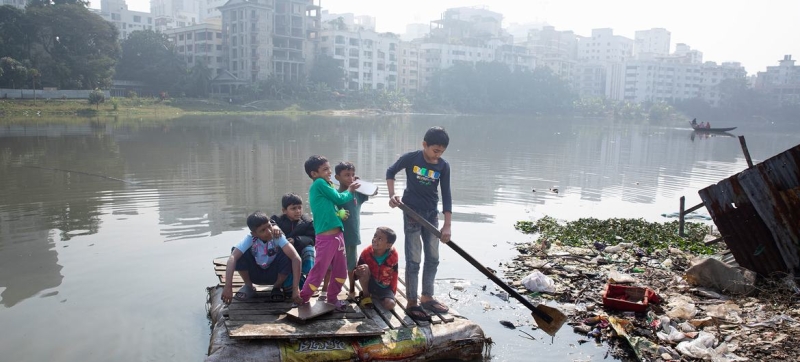
Children in the slums of Dhaka, Bangladesh. World Children’s Day: hundreds of millions of children live in conditions of poverty and deprivation Sustainable Development Goals
Even today, in the 21st century, millions of children remain without essential nutrition, education and health care. On World Children’s Day, which is celebrated on November 20, UN Secretary-General Antonio Guterres recalled the rights of the youngest members of society and the serious challenges they face. According to a new report from the Children’s Fund UN (UNICEF), more than 417 million children in low- and middle-income countries are deprived of at least two essential conditions for normal development.
“It’s terrible that in the 21st century there are still children who go hungry, do not receive an education or are deprived of even basic health care,” says the UN chief’s message.
Children need protection and support
Guterres recalled that a hundred years ago, the League of Nations adopted the Declaration of the Rights of the Child, a document that subsequently formed the basis of the 1989 Convention on the Rights of the Child, which was ratified by a record number state
“Every child has the right to live in peace, health and safety,” the Secretary General emphasized.
He called on the global community “today and every day to protect and support children.”
UNICEF: more 400 million children live in extreme poverty
Meanwhile, a new UNICEF report on the state of the world’s children notes that one in five children in low- and middle-income countries suffers from severe deprivation. The UN Children’s Fund considers six main areas in which the situation in which so-called multidimensional poverty is determined: education, health, housing, nutrition, sanitation and access to water.
Analysis of data from more than 130 countries, shows:
- 417 million children face problems in at least in two of these areas;
- 118 million – in three or more areas;
- 17 million – in four and more.
“When children growing up in poverty and deprived of basic necessities, including adequate nutrition, sanitation, and housing, the consequences of these deprivations on their health and development can be severe,” UNICEF Executive Director Catherine Russell said. Asia.
Progress has slowed
The proportion of children living in poverty fell from 2013 to 2023. However, as UNICEF notes, conflict, climate change, demographic pressure and dwindling international aid are putting further progress at risk.
Particularly alarming is the cut in foreign aid—an estimated 4.5 million children under five will die by 2030. UNICEF warns that by next year the number of children forced out of school will increase by six million.
Problems in developed countries
Even in rich states about 50 million children – 23 percent– live in relative poverty. This means that family income is significantly lower than that of most families in the country. In a number of European countries, including France, Switzerland and the UK, child poverty has increased by 20 percent over the past decade. family benefits and minimum income guarantees, the poverty rate has fallen by more than a quarter.
UNICEF calls on governments to:
- make the elimination of child poverty a national priority;
- take into account the needs of children when setting budgets and economic policies;
- expand social protection and cash assistance to families;
- invest in education, medicine, water, sanitation and housing;
- support parental employment and guardians.
This is especially important against the background of the global funding crisis, the agency notes.
